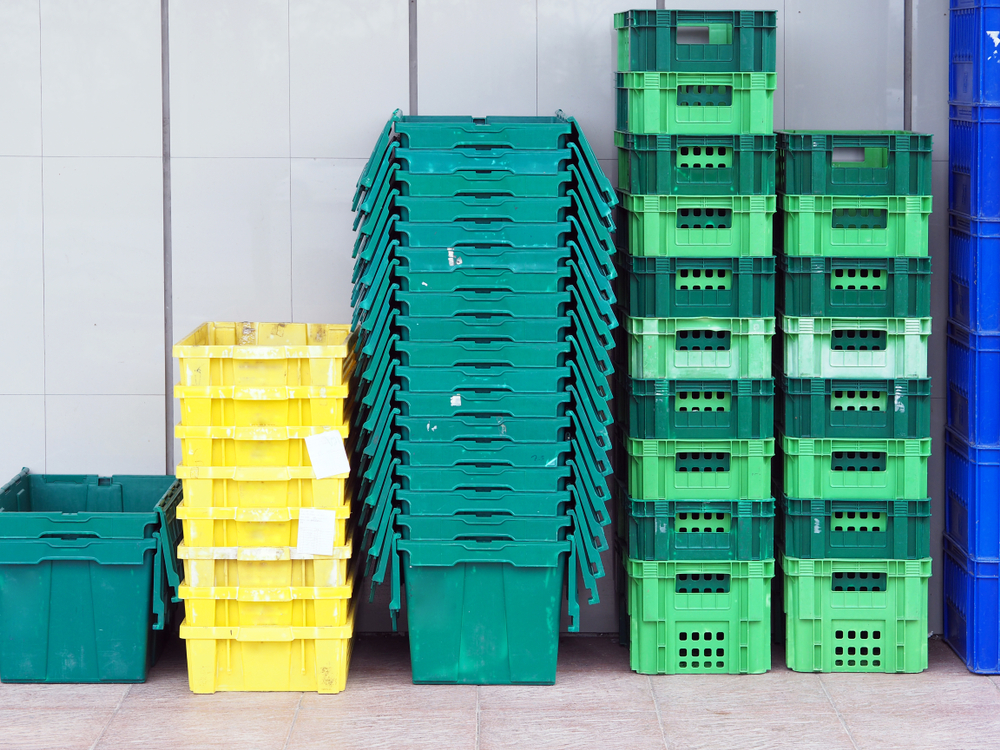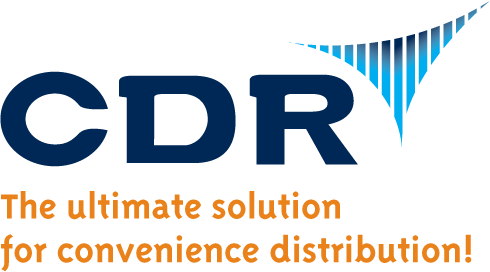Looking to speed up order turnaround times without sacrificing accuracy? Here’s how to streamline every stage of your warehouse’s fulfillment process.
Why Order Fulfillment Efficiency Matters
In the world of convenience distribution—where distributors deliver a high volume of fast-moving goods like snacks, beverages, and tobacco to retail locations—getting the right products to the right place at the right time isn’t just important—it’s the heartbeat of your business.
But fulfillment can also be one of the biggest pain points. Errors in picking, delays in packing, or miscommunications during delivery or routing can quickly snowball into missed stops, unhappy customers, and added costs. With today’s expectations for speed and accuracy only growing, streamlining fulfillment is no longer optional—it’s essential.
In this post, we’ll walk through best practices for picking, packing, and delivery, and explore how warehouse operations can become more efficient and reliable. Whether you’re managing fulfillment in-house or across multiple locations, these strategies will help you boost accuracy, reduce turnaround times, and deliver a better customer experience.
Breaking Down the Order Fulfillment Process in Distribution
The order fulfillment process isn’t a single task—it’s a sequence of coordinated steps that begins the moment an order is placed and ends when it reaches your customer. In convenience distribution, the three core stages are picking, packing, and delivery—and how well each one functions affects the success of the entire process.
Here’s a quick breakdown:
- Picking: This is the process of locating and retrieving the items needed to complete an order. It’s often the most labor-intensive and error-prone part of fulfillment, making it a prime candidate for optimization.
- Packing: Once picked, items are checked, packed securely, and prepared for delivery. This stage requires attention to detail to ensure the right products are sent in the right condition.
- Delivery: The final leg of the process involves labeling, routing, and delivering orders directly to customer locations. For convenience distributors, efficient routing and accurate deliveries are critical to meeting store schedules and maintaining customer satisfaction.
When each of these steps runs smoothly, you reduce mistakes, minimize delays, and build trust with your customers. But when they’re disconnected or manually managed, even a small hiccup can lead to big problems.
That’s why the key to improving order fulfillment lies in understanding and refining each stage—something we’ll explore in the next sections.
Best Practices for Order Picking

Order picking is often the most time-consuming part of the fulfillment process—and also the one most prone to mistakes. In convenience distribution, where orders often include a mix of fast-moving consumer goods in varying quantities, a missed item or delay can disrupt downstream packing and delay store delivery windows. Fortunately, there are several proven strategies to improve both speed and accuracy.
Choose the Right Picking Method
Different picking methods suit different warehouse layouts and order volumes. Here are three of the most common approaches:
- Zone Picking: Assigns workers to specific zones; each picker is responsible for items in their zone. Great for large warehouses with high order volumes.
- Batch Picking: Groups multiple orders together so that pickers can collect all items in one trip. Ideal for small, frequently ordered items.
- Wave Picking: Combines elements of both zone and batch picking, organizing picking schedules around delivery cut-off times or route departures.
Selecting the right strategy—or combining methods for different product types—can drastically reduce walking time and improve order throughput.
Use Hands-Free Technology for Picking Efficiency
Many convenience distributors—especially those using DAC ERP—rely on wrist-mounted devices paired with ring scanners to streamline the picking process. These hands-free tools allow workers to move quickly through the warehouse while scanning and confirming picks in real time, reducing the need to juggle paper pick lists or handheld devices.
Some operations also use voice-directed picking, where pickers receive instructions through a headset and respond with voice confirmations. While less common, this approach also supports hands-free picking and can be effective in certain warehouse environments.
Whether your team uses wrist-mounted scanners, voice technology, or another hands-free method, the goal remains the same: improve speed, boost accuracy, and update inventory in real time as picks are completed.
Maintain an Organized Warehouse
Efficient picking depends on how your products are stored. Keep high-volume SKUs in easily accessible areas, label all locations clearly, and make sure your inventory layout matches your picking method. Even small layout changes can save hours of walking and searching each day.
Keep Inventory Data Up-to-Date
Accurate inventory data ensures that pickers aren’t wasting time looking for out-of-stock items. Real-time visibility through your ERP or WMS is critical for preventing errors and keeping the picking process flowing smoothly.
Related: Warehouse Order Picking Technology: How to Choose the Right System
Best Practices for Order Packing

Once items have been picked, the next step is to ensure they’re packed correctly and ready for delivery. In convenience distribution, this means organizing products into containers that are easy to transport, unload, and check in at customer locations—typically retail stores with limited space and tight receiving windows.
Here’s how to pack orders for efficiency, accuracy, and durability:
Use the Right Containers for the Job
Instead of standard shipping boxes, convenience distributors often use reusable plastic totes, stackable bins, or route-specific carts. These containers should protect products during transport, prevent damage or spills, and make unloading easier at the point of delivery.
Organize by Stop or Section
Group items in a way that supports efficient delivery—either by stop, route, or product category. This makes the unloading process faster and helps store staff quickly verify and shelve incoming inventory.
Double-Check Orders Before Packing
Verify the picked items against the order before they go into containers. Barcode scanning or packing verification systems ensure that nothing is missing or misplaced, reducing errors before items leave the warehouse.
Label Clearly for Delivery
Label each container or tote with key delivery info: route, stop number, customer name, and any special handling instructions. This improves accuracy at every stage—from loading the truck to handoff at the store.
Standardize Your Packing Process
Develop clear packing guidelines for different product types, container sizes, and delivery requirements. This keeps your team consistent, reduces training time, and ensures every order meets your standards for quality and presentation.
Packing for direct delivery isn’t just about getting items out the door—it’s about making the delivery experience smooth, organized, and professional for your retail customers.
Best Practices for Order Delivery
The final step in the order fulfillment process—delivery—is where all your upstream efforts pay off. Unlike warehouses that ship via third-party carriers, convenience distributors typically deliver orders directly to retail locations. At this stage, efficiency and accuracy ensure that customers receive their orders on time, in the right quantities, and in the expected condition.
Use Route Planning Tools
Modern ERP systems like DAC ERP include tools to help plan and optimize delivery routes. These systems reduce drive time, cut fuel costs, and help ensure accurate ETAs for your customers.
Integrate with In-House or Third-Party Fleets
Whether you’re managing your own fleet or working with delivery partners, integration with your ERP ensures seamless handoff of orders, digital proof of delivery, and real-time status updates.
Use Barcode Scanning to Confirm Deliveries
Scanning items at the time of delivery confirms order accuracy and provides a digital audit trail. This reduces disputes and improves customer trust.
Keep Customers Informed
Automatically send delivery notifications or confirmations to your customers, especially if they have scheduled delivery windows. It improves communication and helps store staff prepare for incoming shipments.
By refining your delivery workflows and using integrated systems, your warehouse can improve on-time delivery rates, minimize costly errors, and deliver a consistently excellent customer experience.
How ERP Systems Optimize the Order Fulfillment Process

When it comes to streamlining fulfillment, the right technology can make all the difference. An ERP system designed for warehouse operations doesn’t just track orders—it connects every part of the fulfillment process into one cohesive, real-time workflow.
Here’s how an ERP system helps optimize picking, packing, and delivery:
Real-Time Inventory Visibility
ERP systems provide accurate, up-to-the-minute inventory levels across all warehouse locations. This ensures pickers aren’t sent to empty shelves, packers know what’s available, and delivery routes can be planned based on real-time data.
Automated Order Routing and Prioritization
Smart order management tools automatically sort and prioritize orders based on rules you set—like delivery schedules, customer location, or route stops. This keeps high-priority orders moving efficiently through the system.
Integrated Pick, Pack, and Deliver Workflows
With ERP integration, your fulfillment process becomes seamless. As soon as an order is placed, pick lists are generated and sent to wrist-mounted devices, packing instructions are customized for your delivery methods (like totes or route carts), and delivery details are ready—without toggling between systems.
Fewer Errors and Manual Steps
Automation reduces human error. Whether it’s scanning barcodes to confirm picks or labeling containers for specific stops, an ERP system ensures the right product gets to the right store with fewer mistakes.
Better Reporting and Continuous Improvement
Built-in analytics help you track key metrics like order accuracy, fulfillment time, and delivery performance. With that data, you can fine-tune your processes and address inefficiencies before they impact service.
When your fulfillment operation is tightly integrated within your ERP system—and built specifically for direct store delivery—it’s easier to scale, stay organized, and deliver a consistently excellent customer experience.
How CDR Software Supports Streamlined Fulfillment
At CDR Software, we understand the unique demands of convenience distribution—and we’ve built our ERP solution, DAC ERP, specifically to meet those needs. From mobile picking to final delivery, DAC ERP helps streamline fulfillment by connecting every stage of the process with tools designed for speed, accuracy, and control.
Mobile Order Picking for Greater Accuracy
DAC ERP enables hands-free picking workflows using wrist-mounted devices and ring scanners, allowing warehouse staff to receive digital pick lists and scan items in real time with greater speed and accuracy.
Integrated Packing and Labeling
Our system guides teams through consistent, standardized packing processes and generates delivery labels directly within the ERP. With everything managed in one platform, you can eliminate third-party systems and minimize packing errors.
Seamless Shipping and Delivery Management
From carrier integration to last-mile tracking, DAC ERP helps you manage shipping efficiently and accurately. Our Delivery Manager module lets you monitor routes, verify deliveries, and keep your customers informed every step of the way.
Purpose-Built for Convenience Distribution
Unlike generic ERP systems, DAC ERP is designed specifically for convenience distributors. That means features and workflows are tailored to the fast-paced, high-volume nature of your operations—reducing the need for costly customizations and accelerating your time to value.
By centralizing your picking, packing, and delivery operations in DAC ERP, your warehouse can boost order fulfillment speed and accuracy—while reducing errors, labor costs, and turnaround times.
Final Tips for Ongoing Improvement

Even with strong systems and workflows in place, there’s always room to fine-tune your fulfillment process. Small changes can lead to significant gains in speed, accuracy, and customer satisfaction over time.
Here are a few ongoing strategies to help keep your fulfillment operations running at their best:
Regularly Review Key Performance Indicators (KPIs)
Track metrics like:
- Order accuracy rate
- Average fulfillment time
- On-time delivery rate (by stop or route)
- Return rate due to packing or delivery errors
These KPIs can help you identify bottlenecks, measure improvements, and justify investments in new technology or training.
Invest in Employee Training
Even the best systems depend on well-trained staff. Make sure your team understands fulfillment procedures, knows how to use your ERP tools, and stays updated on any process changes. Cross-training staff can also improve flexibility and reduce downtime.
Continuously Audit Your Processes
Periodically walk through your picking, packing, and delivery workflows to identify inefficiencies. Are pickers traveling too far? Are packers slowed down by missing materials? These routine audits can uncover simple fixes that boost productivity.
Embrace Feedback from the Floor
Warehouse staff often have the clearest view of what’s working—and what’s not. Encourage open communication and gather input from team members who use the systems daily. Their insights can lead to valuable improvements.
Ongoing improvement isn’t about overhauling everything at once—it’s about making steady, data-informed tweaks that keep your operation agile and responsive.
Conclusion
Streamlining the order fulfillment process isn’t just about speeding things up—it’s about creating a smarter, more reliable operation that consistently delivers for your customers. By improving each stage—picking, packing, and delivery—you can reduce errors, boost productivity, and stay competitive in a fast-moving industry.
Whether you’re dealing with high order volumes, tight delivery windows, or labor shortages, having the right strategy and the right tools makes all the difference. A connected system like DAC ERP from CDR Software brings everything together, helping convenience distributors like you run leaner, faster, and more accurately from the warehouse floor to the final delivery.
Looking to take the next step in fulfillment efficiency? Contact CDR Software today to learn how DAC ERP can help you optimize your warehouse operations.
FAQs about the Order Fulfillment Process
What are the main steps in the order fulfillment process?
The order fulfillment process typically includes picking products from inventory, packing them for transport, and delivering them to the customer—often directly to retail locations in convenience distribution.
How can I improve the accuracy of my order fulfillment process?
Using barcode scanning, mobile picking tools, and integrated ERP systems helps reduce manual errors and ensures the correct items are picked, packed, and delivered every time.
Why is the order fulfillment process important for warehouse operations?
Efficient order fulfillment improves customer satisfaction, reduces costs, and helps warehouses meet delivery windows. It’s a key factor in overall performance for distributors.
What role does ERP software play in the order fulfillment process?
ERP software connects inventory, order management, and delivery workflows in real time, helping streamline fulfillment, reduce delays, and provide better visibility across operations.
How can I measure the success of my order fulfillment process?
Track KPIs like order accuracy rate, average fulfillment time, on-time delivery percentage, and return rates to evaluate performance and identify areas for improvement.

